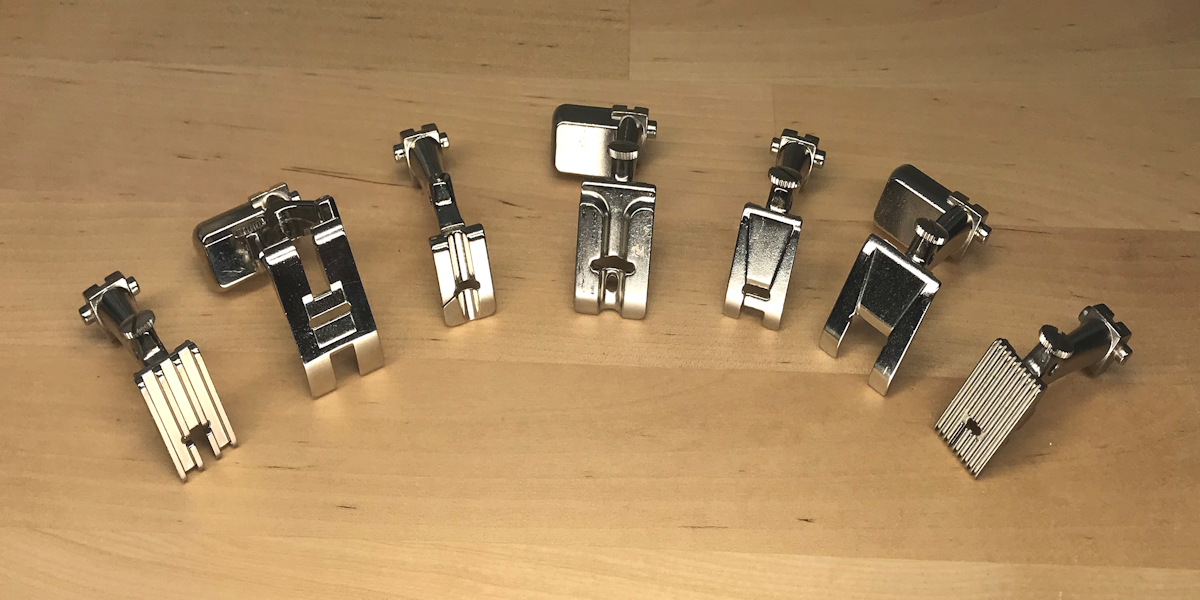Turn the foot over and look at the bottom of the sole of any presser foot. This often gives you clues as to what that foot is designed to do. The list below is a brief overview of what you might find when looking at the soles of your presser feet. Remember, the secret is in the sole!

Flat Sole
No sole is completely flat, but an all-purpose foot is flat with a small indentation behind the needle to move over straight stitches and other forward-motion stitches such as zigzag and running stitches. It is not made for satin stitching or heavy decorative stitches. Another all-purpose foot with a flat sole has shallow indentations behind and in front of the needle. This foot is for reverse pattern stitches that go back and forth to form a pattern. The indentations give room for the thread to pass under the foot without the foot dragging over them.
Wide Indentation
A foot with a wide indentation on the bottom is designed for stitching over heavy thread build-up that you see in satin stitching and heavy decorative stitches. Sewing these types of stitches with an all-purpose foot may seem like it works but if you take a close look, the stitches are not as pretty or as consistently formed. That’s because a flat foot drags on the heavy thread build-up and is minutely delayed as the needle is stitching. So, use the correct foot and get the best results. These feet are usually called satin stitch or embroidery feet.
Tunnel for Piping
If your presser foot has a large tunnel or groove on the sole, it is designed to stitch over cord, usually for making piping or stitching the cord on fabric (called couching) to add color and/or texture. This type of foot can also stitch over strands of beads, securing them to the surface of the fabric.
Grooves for Pintucks
If you see multiple smaller,grooves covering the entire sole of the foot, you probably have a pintuck foot. Pintucks are made with a double needle and a pintuck foot. The fabric is drawn up into the groove to create a ridge, adding texture to your fabric. The pintucks often have cording incorporated into them for body and structure.
So, the next time you are wondering what type of sewing a particular foot does, look at the sole for the secret.
Join the Sewfeet Community!
Click here to sign up for our newsletter and join the Sewfeet Community! Once a month, I’ll send you sewing tips and let you know about new blog posts so you can keep up with all the fun things I want to share with you. Thanks for stopping by and I’ll “see” you soon!

